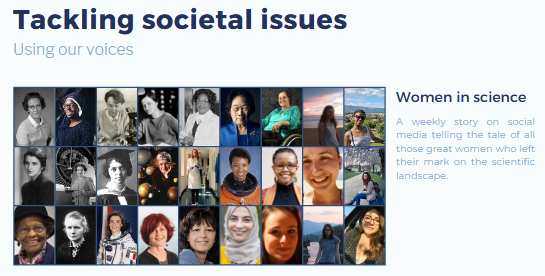Education & Communication
Infographie.pdfDoing science in school and during events
We have carried out practical work in schools in order to introduce young people to biology techniques. We chose to organize this type of session because it seemed to us to be the most effective way to interact with the students, to make them think, and to transmit our knowledge. First of all, we carried out experiments with 10-year-old pupils from the Doudeauville primary school in Paris. This collaboration was possible thanks to the foundation La main à la pâte, which allows researchers and teachers to meet and make science accessible to all. The goal of our intervention with such young students was to awaken their curiosity about biology and the world around them.
We also organized practical work on PCR with 17-year-old students from the Maurice Genevoix high school in Montrouge. These sessions had a real educational interest, since they allowed the students to understand the functioning of the PCR tests used for Covid-19 screening, and to answer their questions concerning their future scientific career.

We participated in several public events (science fair, welcome day) with the aim of stimulating people's interest in biology. To maximize the exchange between our iGEM team members and the public, we chose to run workshops including fun experiments for children (e.g. molecular cooking), but also posters describing our project. The fact of holding stands facilitated the dialogue with the general public: we were able to explain the principles of biology in a vulgarized way to children, and also to give detailed explanations about our project to students and adults.
The protocols of the practical work we have done as well as those of other experiments intended for the general public are available on our wiki and will be exploitable by future iGEM teams. In addition, the foundation La main à la pâte will transmit our content to teachers so that they can repeat the experiments with their students.
Infographics to debunk prejudice on GMOs
If biology is a well-known field, few people know what synthetic biology consists of. In order to enlighten people on this subject, we have created infographics on the implication of GMOs in different areas of everyday life: nutrition, health, environment, and energy. We chose this format because it allows us to represent a large amount of information in a visual way, which makes it easier for everyone to understand. The main objective of these infographics is to bring another point of view to people about GMOs. Indeed, the use of GMOs is debated and our goal is to show how they can be used to our advantage. Through these infographics, we seek to encourage people to cultivate an open mind.

Our infographics can be used on the stands of future iGEM teams to show concrete examples of synthetic biology applications.
Posts on microorganisms
We created posts about extremophilic microorganisms, i.e. capable of surviving in extreme environments (e.g. without water, without oxygen or at very high temperatures). We shared these posts on Instagram, and also in hard copy to display at our stands to reach the widest possible audience.


Extremophilic microorganisms are a real source of inspiration for human beings. Thus, our posts can be easily integrated in a school setting, but also for informational purposes for future iGEM teams who would like to work on one of these microorganisms.
Women in Science
We have shared on Instagram portraits of women who have impacted science, along with short descriptions of their achievements. These posts are easy to read and understand, and therefore accessible to everyone. We wanted to highlight these women in order to broaden people's general culture, and especially to show young girls that women have quite a place in science.
Currently, many young girls are afraid to take up a scientific career for fear of not succeeding or feeling illegitimate. We strongly encourage school teachers to take up the concept of "Women in Science" and expose their classes to the careers of brilliant women in science to break down preconceived ideas.











